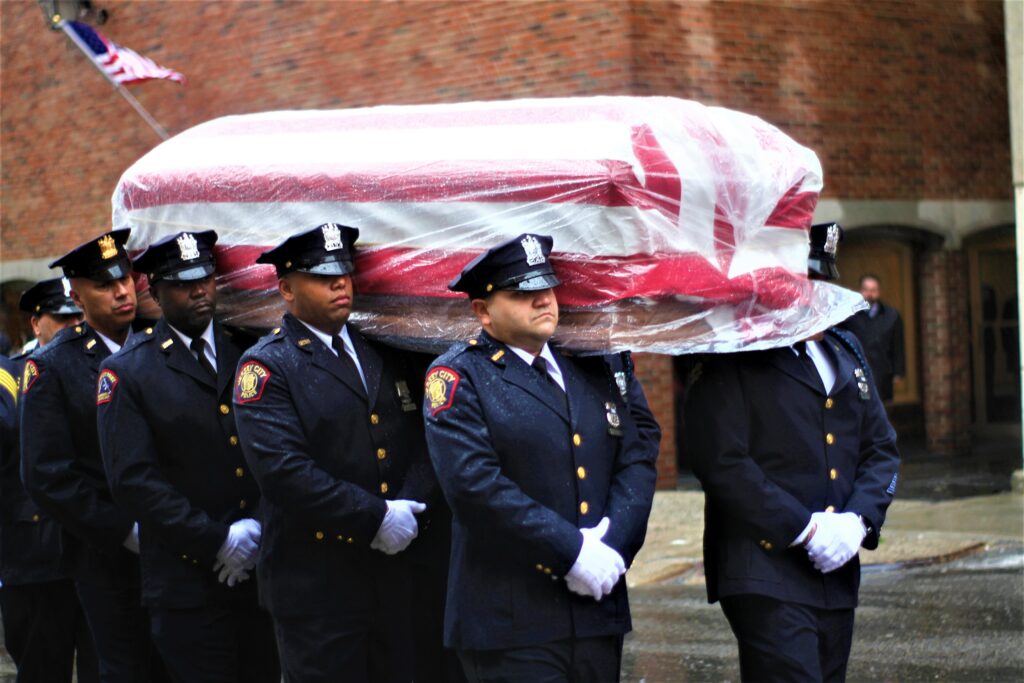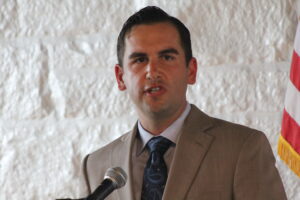The Year of the Gun in Jersey City
Listen to audio version of this article

Mark Twain is quoted as defending a firearm as “an innocent thing.”
“Of course there are desperadoes on the frontier, but that is the only part of the world they live in,” Twain claimed.
Jersey City in 2019 dispelled this notion with a number of loud bangs, starting off the year and ending it with acts of violence so appalling that the world took notice.
Jersey City Mayor Steven Fulop inherited an urban frontier when he took office as mayor in 2013 and

has been struggling to keep it contained ever since.
Gun violence has become so common in some parts of Jersey City over the last decade that the streets of the Greenville section might well serve as the setting for shootout of the OK Coral or High Noon.
Jersey City started off the year when street gangs shot up the food court at Newport Mall, a shocking development since unlike other gang activity, this violence came to the heart of the community and put at risk a population not normally involved in these kinds of crimes.
While murders and shootings had risen in the city, these generally took place in a remote section of the city and allowed the general public to see as not relevant to their lives – and in many cases involved black on black violence.
This implied a kind of social racism -- as long as it happened in Greenville, few people in The Heights or Downtown or the Westside cared.
John Flora, a Democratic primary candidate for the House of Representatives in District 10 – which covers sections of Newark, Bayonne and Jersey City, has taken on Jersey City Mayor Steven Fulop’s claims about crime being on the decline.
Fulop has refused to engage the candidate on the issue, suggesting Flora is searching for a campaign issue.
But Flora’s assessment of gun violence and the way it is reported in Jersey City isn’t completely wrong.
For the last two years, Fulop has issued crime reports based on mid-year statistics trying to paint a good face on a sad situation. Early in 2019, crime indeed seemed on the decline. But a sharp increase in June raised significant concerns in the community,
Religious leaders, civic leaders, and residents in the southern portion of Jersey City expressed fear of increased violence at a community hearing that included the mayor in June that seemed to foreshadow a series of violent acts that have grown worse and more frequent, including an attack on a Jewish supermarket, and the death of four innocent people – one of whom was a cop.
Tensions were high enough to lead to the police shooting two men who were setting off fireworks in early July. While a review vindicated the cops, the incident was a symptom of high tension in the community as well as among the police. It may well have foreshadowed the murder of a cop later in the year.
Although Fulop played down these signs of trouble, some high-ranking police officials believe that the uptick in violence could be attributed to a reduced police presence in parts of the city prone to violence. This, despite the fact that the city has increased the number of officers in the department to historic highs.
In anticipation of hiring more cops, the city promoted new higher-ranking officers earlier this year. But retirements have already depleted some of higher ranks, and may leave the department without enough officers in leadership going into 2020 when a good number of deputy chiefs are expected to retire.
The table calls for the department to have up to 24 deputy chiefs, 35 captains, 50 lieutenants, 48 sergeants. Ideally, there should be one sergeant to supervise every four cops.
As of next February, the department could have as few as nine deputy chiefs remaining.
Some ranking police officers claim the reduction in violent crime Fulop touted happening earlier in the year was due to the ability of the city to mobilize additional cops through overtime – and that budget cuts to police overtime in June reduced the ability to the department to bring additional personnel to high crime areas.
This may account for the sudden upsurge in violence the city has witnessed since then, especially the almost wild west gun play that took place in December, where even one of the police stations was a target, and several additional cops were hurt in the line of duty.
“Before city cut overtime in the budget, the department could throw bodies out into the streets wherever they needed them,” one police captain said.
Councilman Richard Boggiano, a retired police officer, said the department has sought to compensate for this by shifting police from other areas of the city, in particularly from the North District to the southern part of the city.
Fulop, of course, has been a strong advocate of getting illegal guns off the streets, adding to the irony surrounding the death of Det. Joseph Seals on Dec. 10.
Seals worked in Cease Fire Unit whose assignment was to respond to gun violence and to remove weapons from the street, a program that appeared to be extremely effective.
More than once, however, Jersey City Public Safety Director James Shea, noted that most of the shootings involved a limited number of actors, many of whom know each other, and in many cases are acting out of vengeance for some past slight.
But this perception of gang members killing other gang members (including sometimes innocent victims who happened to get in the way) may have gone out the window on Dec. 10, when it became clear that there is also a problem with domestic terrorists, and that guns are coming into Jersey City from remote places – often replenishing those cops manage to confiscate.
While Fulop touts successes by showing how crime is statistically reduced, people who know the victims feel the pain, something Flora appears to emphasize in his criticism.
Twain might have said it best when he claimed, “Facts are stubborn, but statistics are more pliable.”





